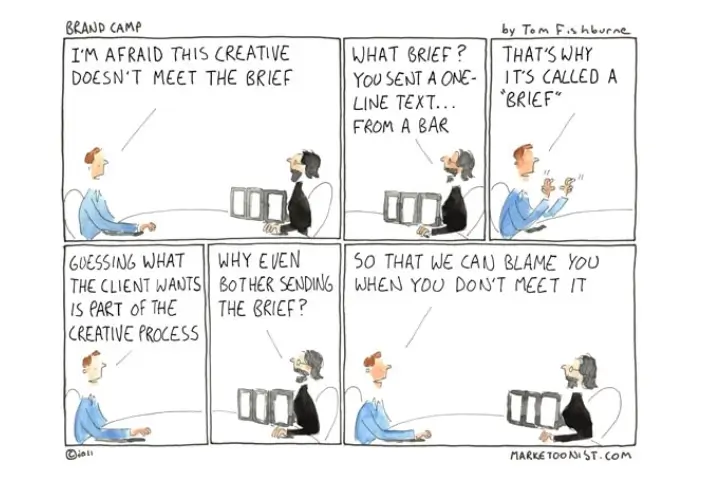In communication agency jargon, a client’s expression of communication needs is referred to as a briefing. In its strictest sense, a briefing is a summary document outlining your project and its objectives. It serves two purposes:
- To allow you to introduce yourself clearly and define your expectations and goals
- To help service providers better understand who you are and what you’re asking for
Involve all relevant stakeholders
Whether you’re planning a communication campaign, a graphic design project, or an event, it’s essential to bring together all parties involved in the project—including the decision-maker whose approval will be required. By involving all concerned colleagues, you’ll gather diverse viewpoints that will help you create the most comprehensive brief possible. Remember, a small detail for you may be crucial for an external provider.
Define a budget and a planning
Far too often, agencies receive briefings without a budget. However, the budget is an integral part of the project scope. It reflects both the scale you envision and the resources you’re willing to allocate. Without defining it upfront, you may be disappointed by the proposals you receive—leading to wasted time and frustration on both sides. Setting a timeline with clear deadlines is also essential to structure the work and identify key milestones. Don’t forget to give agencies enough time to develop their ideas thoroughly and respond meaningfully to your needs. Depending on the project’s complexity, it’s advisable to allow at least 4 weeks.
Introduce your company, market position, and values
To create a concept that aligns with your expectations, the agency must clearly understand who you are, your values, and your market position. Before developing creative ideas, the agency will first analyse the market and your role within it. Therefore, it’s particularly helpful for them to understand how you perceive your positioning.
Clarify your needs and objectives
“Make me a proposal for my website,” or “We want to celebrate our company’s 10th anniversary—come up with something out of the ordinary!” are not briefings. Who is your target audience? What goals are you aiming for? What are your key messages? What do you expect in terms of deliverables? How will you measure the project’s success? These are the kinds of questions an agency needs answers to provide a proposal that meets your expectations.
Being clear about your needs will help you ask the right questions and will guide agencies in the right direction to submit proposals that meet your objectives.
Refine your briefing through dialogue with the agency
There’s often a gap between written and spoken communication. Explaining your request in person allows you to get to know the agency, and their questions may help you refine your thinking. It’s common for a briefing to evolve after initial discussions with service providers.
From the very first stage, the agency plays an important role by shaping and enriching the original request.
Ask the agency to present its recommendation
Just like the briefing presentation, the oral presentation of the agency’s proposal is important. It gives you a chance to further develop the project and ask questions that help you better understand their recommendations. For the best outcome, make sure the final decision-maker is present during this presentation.


